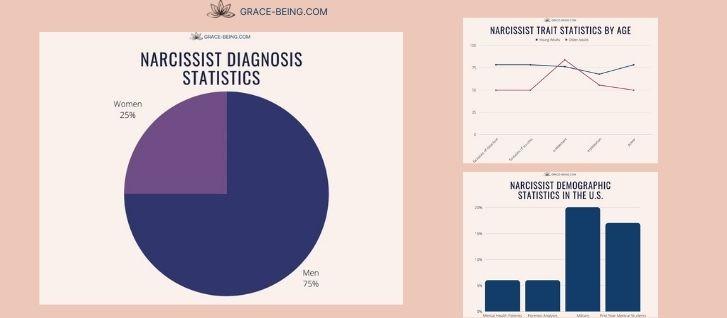Narcissistic Personality Disorder (NPD) is a complex mental health condition characterized by patterns of grandiosity, a need for admiration, and a lack of empathy. While NPD affects individuals regardless of gender, emerging research and clinical observations highlight notable differences in how men and women present with this disorder. Understanding these gender-based variations is crucial for accurate diagnosis, effective treatment, and compassionate care. In this article, we will explore the key differences in the manifestation of NPD in men versus women, shedding light on how societal expectations, behavioral expressions, and emotional experiences shape the disorder across genders. Whether you’re a clinician, a student, or simply curious, this deep dive aims to broaden your perspective on NPD and enhance awareness of its diverse faces.
Table of Contents
- Understanding Gender-Specific Behavioral Patterns in Narcissistic Personality Disorder
- Emotional Expression and Interpersonal Dynamics in Men and Women with NPD
- Impact of Societal Expectations on the Presentation of Narcissistic Traits
- Tailored Therapeutic Approaches for Men and Women Living with Narcissistic Personality Disorder
- To Conclude
Understanding Gender-Specific Behavioral Patterns in Narcissistic Personality Disorder
Men with narcissistic personality disorder (NPD) often exhibit more overtly grandiose behaviors and dominance-driven interactions. This can manifest as a blatant need for admiration, aggressive competitiveness, and a persistent desire to be seen as superior. These individuals may prioritize external achievements and often engage in more direct forms of manipulation to maintain control and gain validation. Their expressions of entitlement and lack of empathy are typically more visible and socially disruptive, leading to strained personal and professional relationships.
In contrast, women with NPD tend to showcase a more subtle and relational approach to their narcissistic traits. Their behaviors might include emotional manipulation, passive-aggressiveness, and strategic self-victimization to elicit sympathy and indirectly control others. Women may place a stronger emphasis on appearance, social status, and interpersonal connections to boost their inflated self-image. This gender-specific presentation can often be overlooked or misdiagnosed, as it doesn’t always conform to the aggressive stereotype associated with narcissism but still includes a profound difficulty with empathy and validation needs.
- Men: Direct dominance, overt grandiosity, competitiveness
- Women: Emotional manipulation, passive aggression, relational control
- Both: Deep entitlement, lack of sustained empathy, craving validation
Emotional Expression and Interpersonal Dynamics in Men and Women with NPD
When exploring how emotional expression manifests in individuals with Narcissistic Personality Disorder (NPD), gender plays a subtle yet significant role. Men with NPD often exhibit emotional expressions that align with societal expectations of masculinity—marked by stoicism, anger, and dominance. They may suppress vulnerability while using their emotions to assert control or status in interpersonal relationships. In contrast, women with NPD might display emotionality that seems more overtly dramatic or relational, such as frequent displays of hurt, anxiety, or craving validation. This divergence in emotional style not only shapes how these individuals are perceived but also influences their relational strategies and coping mechanisms.
Interpersonal dynamics further highlight these distinctions. Men with NPD tend to engage in interactions that reinforce their superiority, often isolating themselves through dismissive or aggressive behaviors. Their relationships may center on conquest—whether emotional or social—emphasizing power struggles and control. Women, meanwhile, might navigate relationships through a complex interplay of manipulation, emotional dependency, and fluctuating self-esteem. They are more likely to employ relational tactics that emphasize charm or victimhood to maintain status within social circles. Both approaches reflect core narcissistic traits but are molded by gendered socialization, creating nuanced patterns that professionals must consider when diagnosing or treating NPD.
- Men: Stoicism, anger, control, dominance in relationships
- Women: Emotional dramatization, anxiety, validation-seeking, relational manipulation
Impact of Societal Expectations on the Presentation of Narcissistic Traits
Societal expectations deeply influence how narcissistic traits manifest in men and women. In many cultures, men are often socialized to exhibit dominance, assertiveness, and confidence, traits that can closely align with traditional narcissistic behaviors such as grandiosity and entitlement. This alignment means that when men display these behaviors, they might be perceived as strong leaders or ambitious go-getters rather than individuals with narcissistic personality disorder (NPD). Conversely, women are frequently encouraged to embody qualities like empathy, humility, and warmth. As a result, narcissistic traits in women often manifest in more covert ways, such as passive-aggressiveness, manipulation, or a heightened focus on appearance and social validation.
The societal lens creates distinct challenges in identifying and addressing NPD based on gender:
- Men: Their overt expressions of narcissism are often normalized or even admired, leading to underdiagnosis or misinterpretation of NPD symptoms.
- Women: Their more subtle or socially palatable narcissistic expressions can be overlooked, dismissed as attention-seeking or insecurity rather than a clinical issue.
Understanding these societal pressures is crucial for mental health professionals to ensure accurate diagnosis and tailored treatment approaches that consider gender-specific presentations of narcissistic traits.
Tailored Therapeutic Approaches for Men and Women Living with Narcissistic Personality Disorder
When designing therapeutic interventions for individuals with Narcissistic Personality Disorder, it’s crucial to recognize the nuanced differences in how men and women typically manifest narcissistic traits. For men, therapy often focuses on addressing externalized behaviors such as overt grandiosity, exploitation of others, and dominance within personal and professional relationships. This approach integrates strategies like cognitive-behavioral techniques to challenge entitlement beliefs and social skills training to reduce antagonistic interactions. Encouraging emotional vulnerability can help men break through the rigid self-image that NPD often enforces, fostering a more grounded and empathetic self-perception.
Conversely, women with NPD often present with more covert or vulnerable narcissistic features, including hypersensitivity to criticism, perfectionism, and deep-seated feelings of inadequacy masked by a facade of self-sufficiency. Therapeutic frameworks tailored to women tend to emphasize building self-compassion and resilience, along with exploring underlying trauma or attachment disruptions. Emotionally focused therapies and psychodynamic approaches can be particularly effective, as they facilitate reconnecting with suppressed emotions and dismantling defensive coping strategies. Treatment that honors the unique emotional landscape of women with NPD can lead to meaningful progress and a healthier relational dynamic.
- Men: Focus on externalizing behaviors, cognitive restructuring, emotional vulnerability
- Women: Emphasize emotional healing, self-compassion, attachment-based work
To Conclude
In understanding Narcissistic Personality Disorder, recognizing the nuanced differences in how it presents in men versus women is crucial for accurate diagnosis and effective treatment. While core traits may overlap, gender-specific expressions can influence everything from behavior patterns to interpersonal dynamics. By appreciating these distinctions, mental health professionals, loved ones, and individuals alike can foster more compassionate and tailored approaches to support those affected by NPD. Continued research and awareness remain essential as we strive to deepen our understanding and improve outcomes for all.

